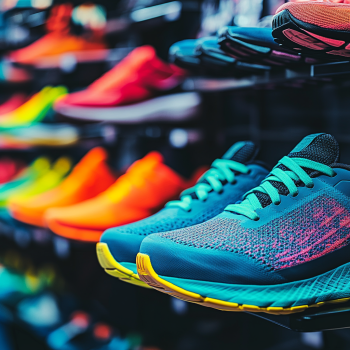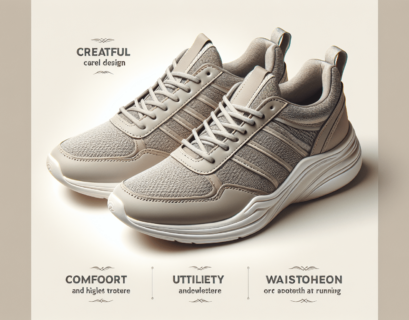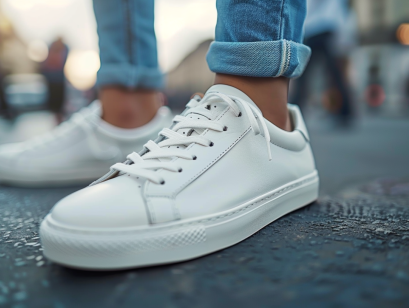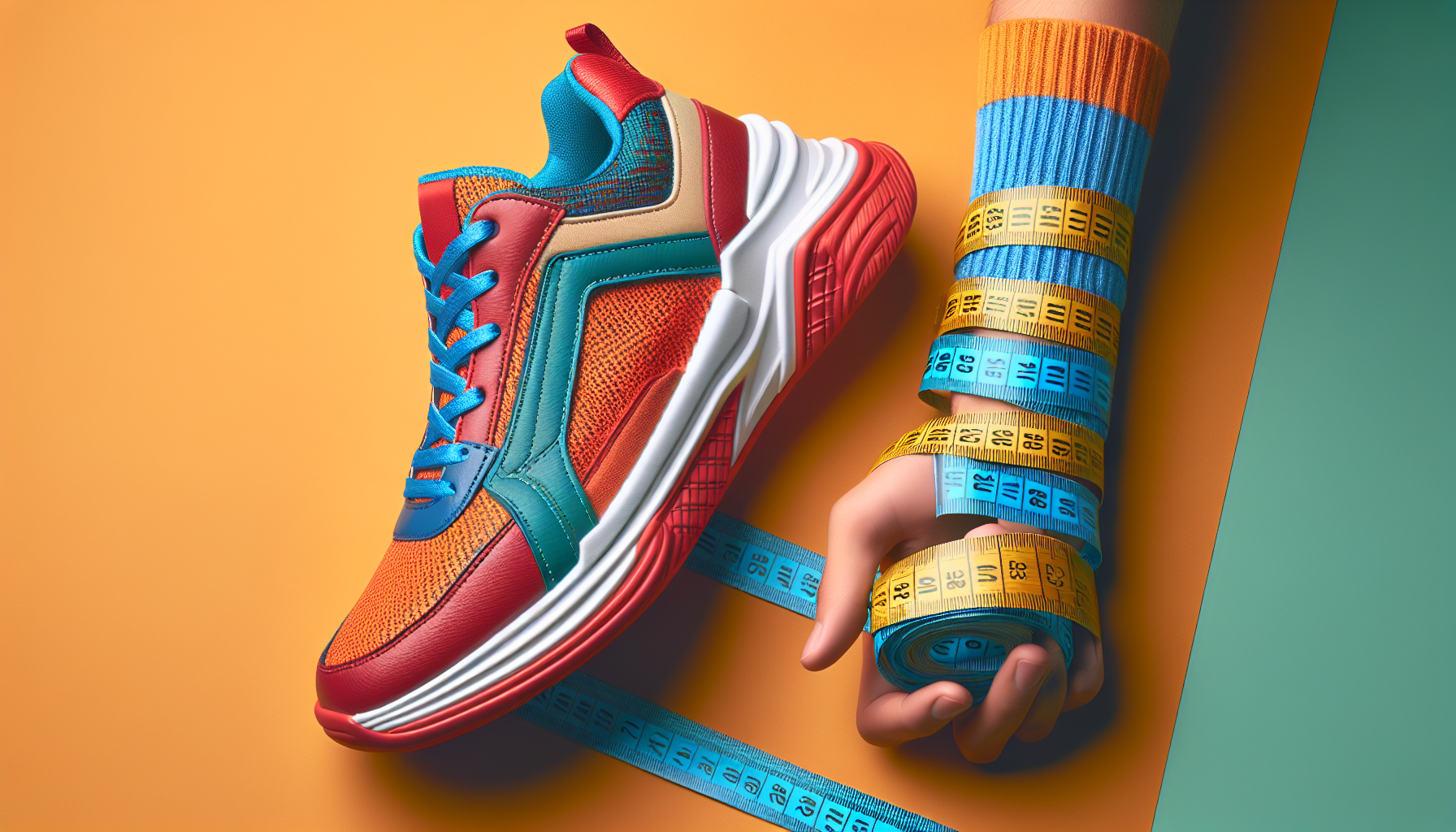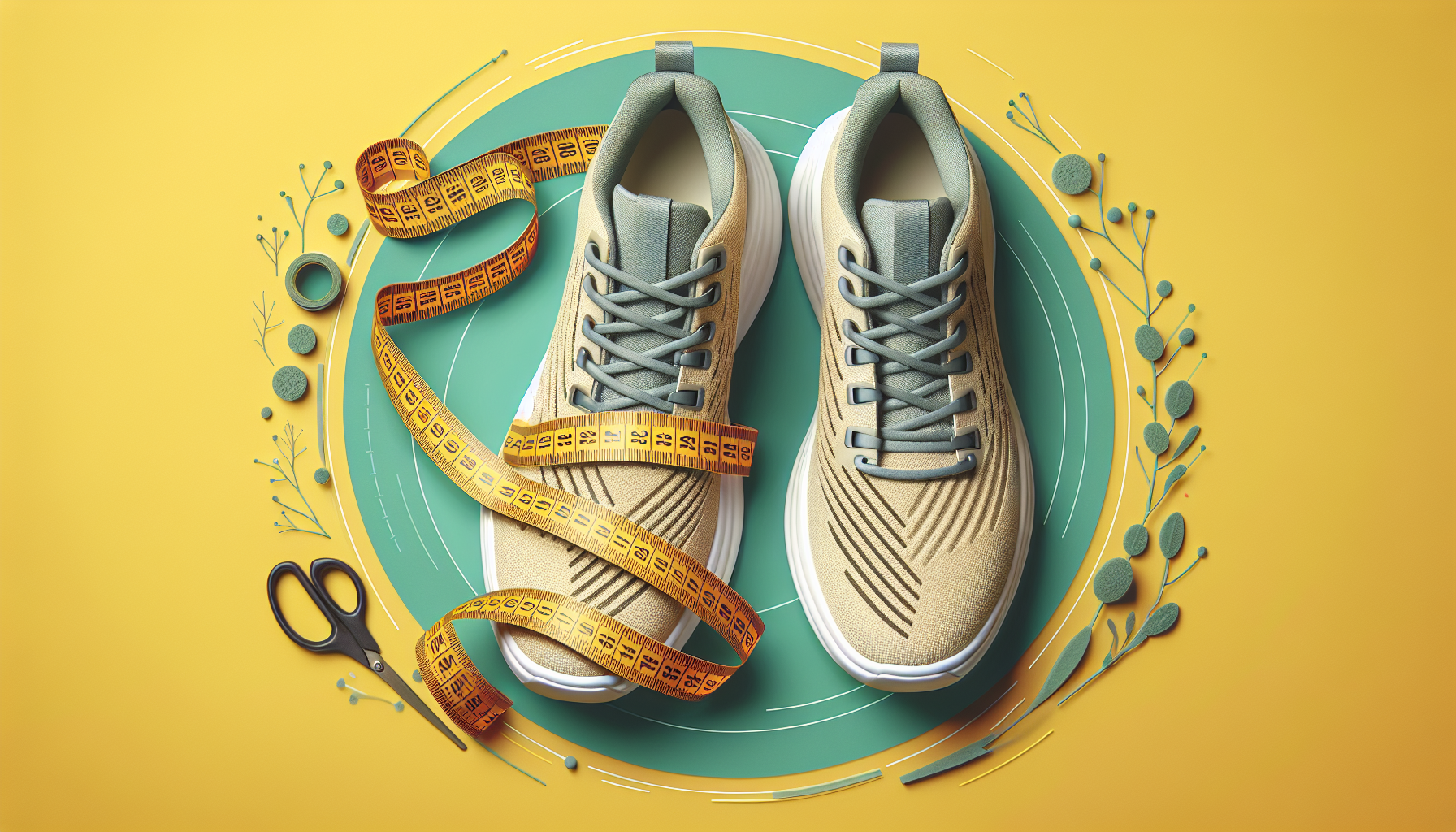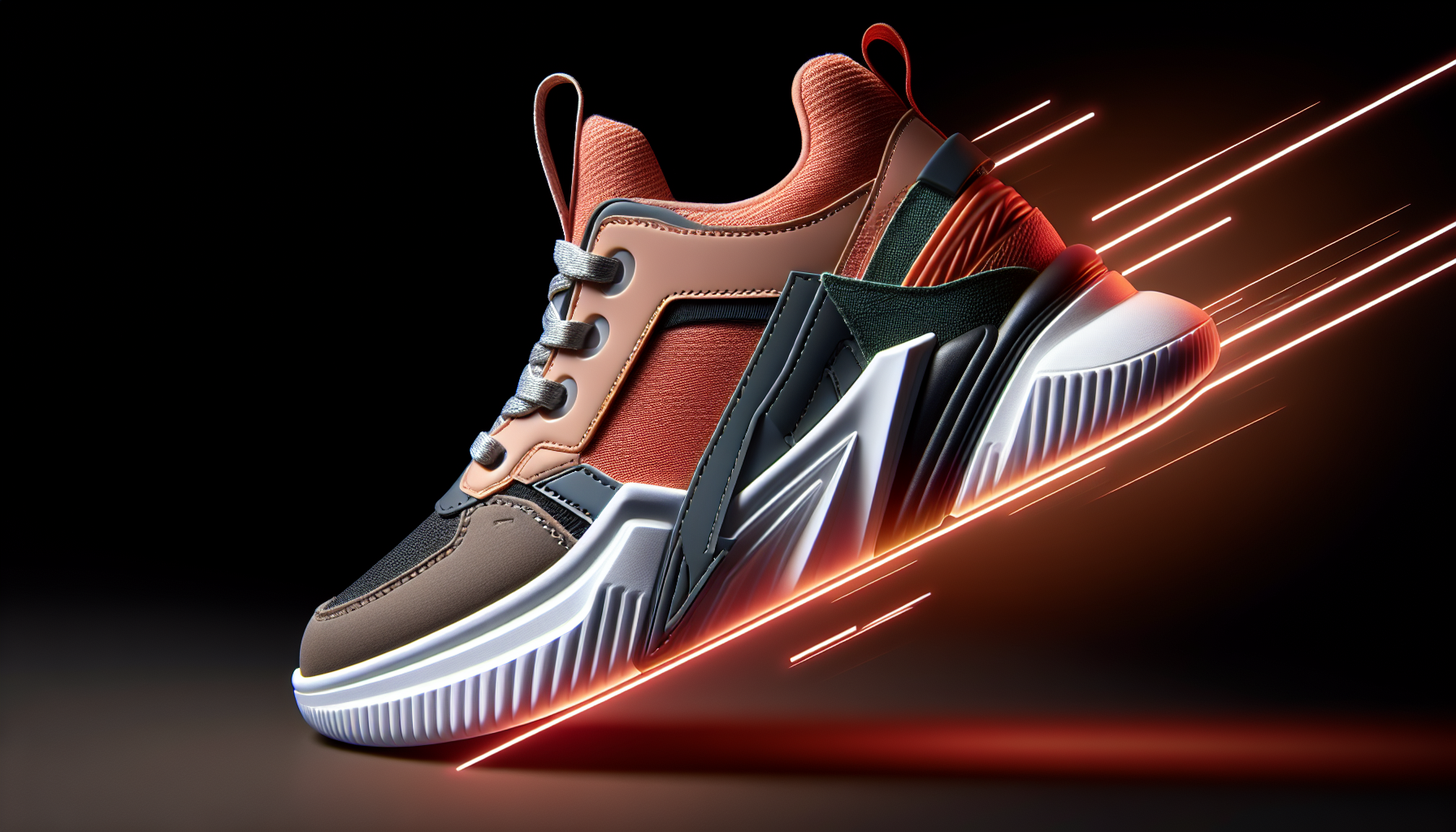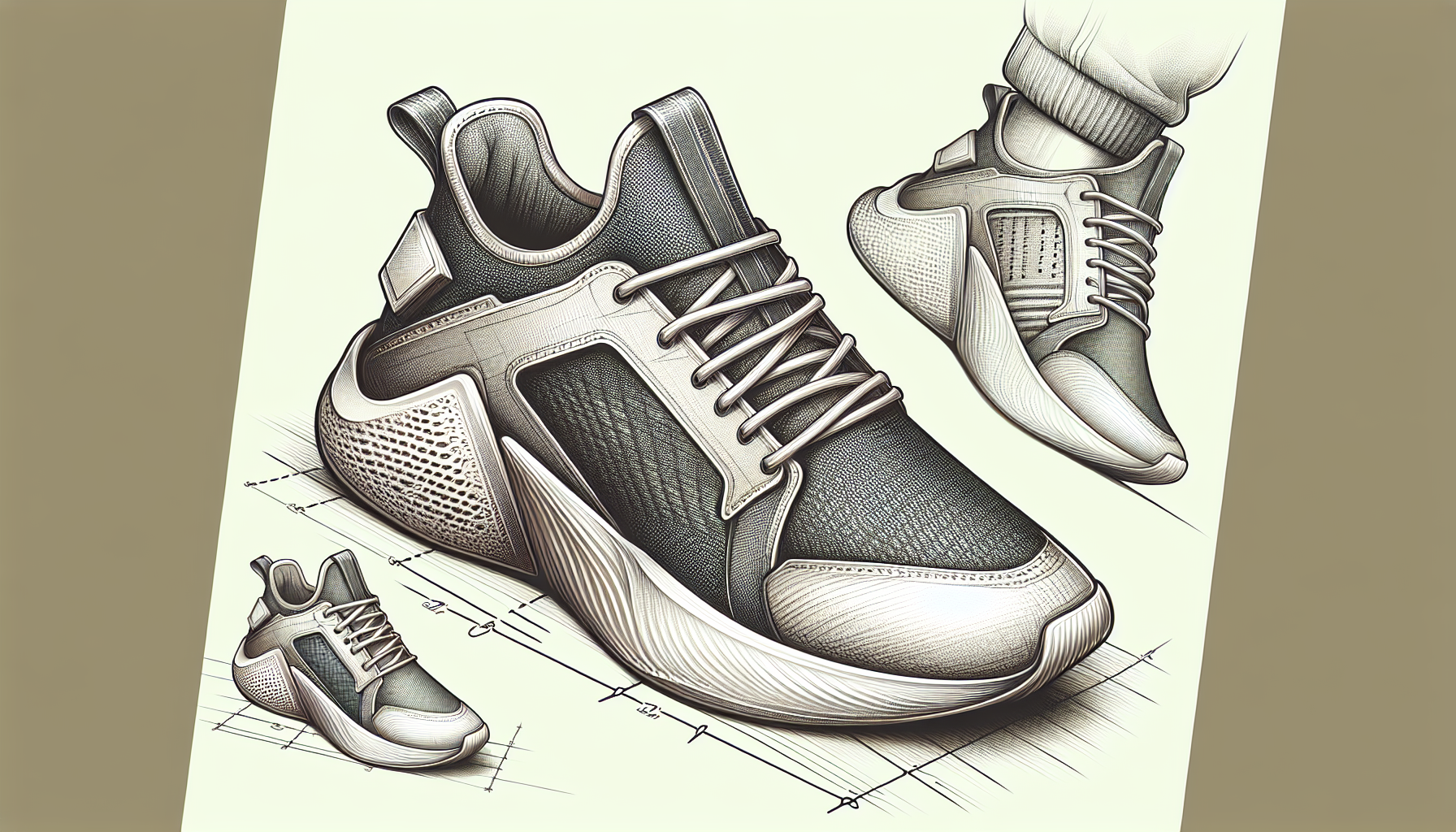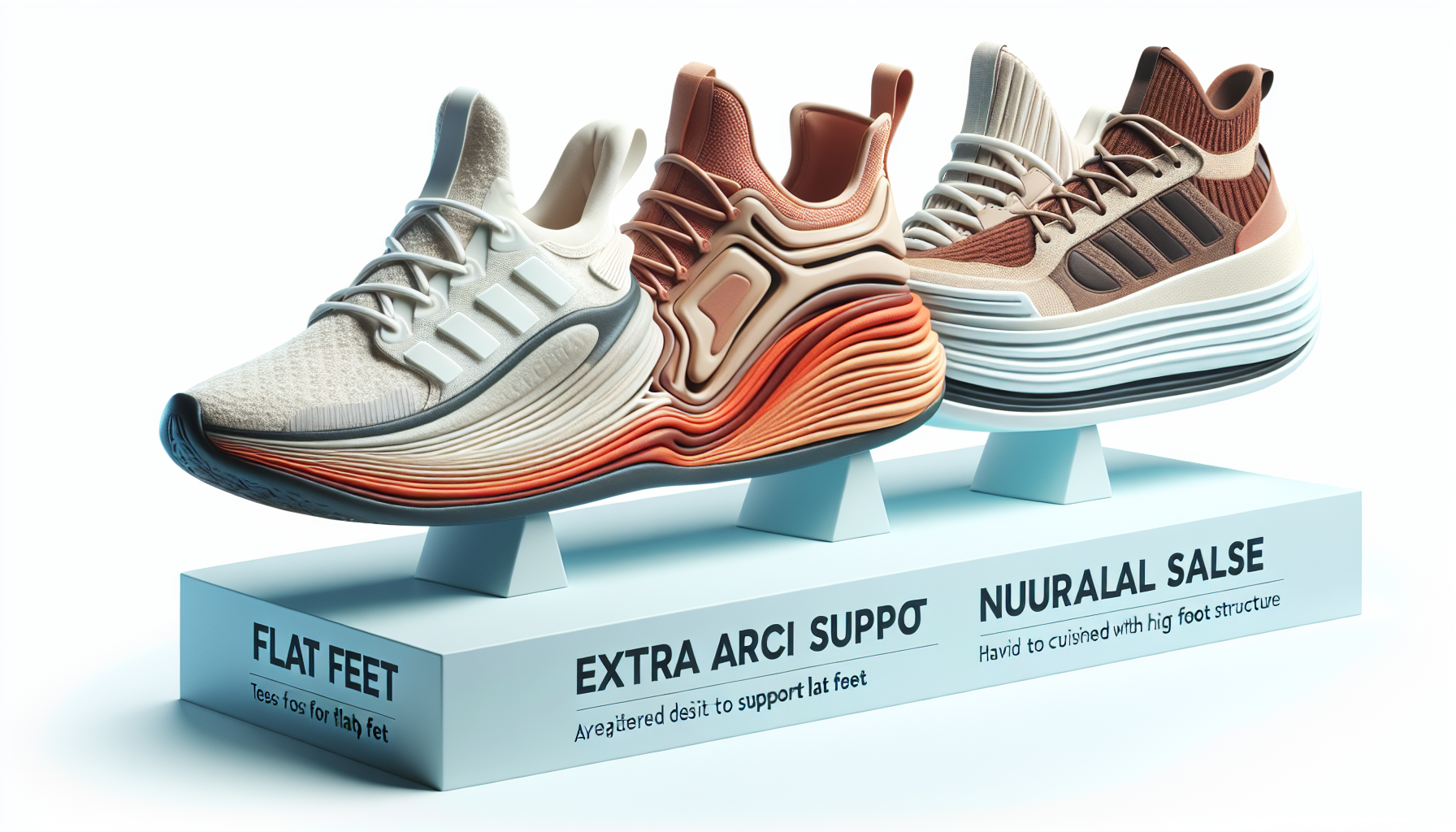When it comes to running, having the right pair of sneakers is essential. But with so many options available, how do you choose the perfect pair? In this article, we will guide you through the process of selecting the ideal sneakers for your running needs. From considering your running style and foot type to understanding the different features and technologies available, we will help you make an informed decision that will not only enhance your running performance but also provide ultimate comfort and support. So lace up your shoes and get ready to find your perfect match!
Understanding Running Shoes Anatomy
When it comes to choosing the perfect pair of running shoes, it’s essential to understand the anatomy of the shoe. A running shoe consists of three main parts: the upper, midsole, and outsole.
The upper is the top part of the shoe that covers your foot. It is typically made of mesh or synthetic material that provides breathability and support. The upper plays a crucial role in keeping your foot secure and comfortable during your run.
The midsole is the layer between the upper and the outsole. It provides cushioning and absorbs the impact of each step you take while running. The midsole is often made of materials such as EVA (ethylene-vinyl acetate) or polyurethane foam, which provide excellent shock absorption and support.
The outsole is the bottom part of the shoe that comes into direct contact with the ground. It is responsible for providing traction and grip. The outsole is usually made of rubber or durable synthetic materials that offer durability and traction on various surfaces.
Identifying the Shoe Last
Another important aspect of running shoe anatomy is the shoe last. The shoe last refers to the shape of the shoe’s sole. Identifying the shoe last is crucial in ensuring a proper fit and comfort.
Shoe lasts come in different shapes, such as straight, curved, or semi-curved. Each shape caters to different foot types and running styles. For example, runners with a high arch may benefit from a shoe with a curved last, as it provides more flexibility and support.
Distinguishing Running Sneaker Features
Running sneakers come with various features designed to enhance your running experience. One common feature you might come across is the presence of extra cushioning in the heel or forefoot area. This feature provides additional support and shock absorption.
Another feature to consider is breathability. Look for shoes with mesh uppers or ventilation holes that allow air to circulate within the shoe, keeping your feet cool and dry during your run.
Other important features to consider are stability and support. Many running shoes offer features that help correct overpronation or provide additional arch support for individuals with flat feet. Understanding these features can help you choose a shoe that will provide the necessary support and comfort for your running style and needs.
Assess Your Running Style and Goals
Before choosing a pair of running shoes, it’s essential to assess your running style and goals. By understanding your running level, the type of running you do, and your running goals, you can find a pair of shoes that best aligns with your needs.
Identifying Your Running Level
Are you a beginner, intermediate, or advanced runner? Knowing your running level is crucial in choosing the right pair of sneakers. Beginners may benefit from shoes that provide extra cushioning and support to help absorb shock and reduce the risk of injuries. Intermediate and advanced runners, on the other hand, may prefer shoes that offer a balance of cushioning and responsiveness, allowing for a more efficient and faster run.
Considering the Kind of Running You Do: Marathon, Trail, Sprinting
The type of running you do plays a significant role in choosing the perfect pair of sneakers. If you’re training for a marathon, you’ll want shoes that provide adequate cushioning and support for your long-distance runs. Trail runners, on the other hand, will require shoes with more aggressive tread patterns and durable outsoles to navigate rough terrains effectively. Sprinters, focusing on short bursts of intense speed, may opt for lightweight and responsive shoes that promote quick turnover.
Understanding Your Running Goals
Everyone has different running goals, whether it’s improving speed, endurance, or simply staying fit. Understanding your running goals can help you select a pair of shoes that align with these objectives. For example, if you’re aiming to improve your speed, choosing lightweight and minimalistic shoes can help enhance your running efficiency. If you’re focused on long-distance endurance, shoes with ample cushioning and support may be the right choice.
Foot and Arch Types
Your foot type and arch type are essential factors when it comes to choosing running shoes. Understanding these aspects can help you find the right level of support and prevent potential injuries.
Determining Your Foot Type: Overpronation, Underpronation, Neutral
Your foot type can be classified as overpronation, underpronation (also known as supination), or neutral. Overpronation occurs when your foot rolls too far inward during the gait cycle, putting additional stress on the arch and ankle. Underpronation, on the other hand, happens when your foot doesn’t roll enough inward, causing excessive pressure on the outer edge of the foot. Neutral pronation refers to a balanced foot strike, where the foot lands evenly on the ground.
Identifying your foot type is crucial because it can guide you towards the right shoe category that provides the necessary stability and support. Overpronators, for example, may benefit from stability shoes that offer medial support to prevent excessive inward rolling. Underpronators, on the other hand, require shoes with extra cushioning and flexibility to absorb shock.
Understanding Your Arch Type: High Arch, Low Arch
In addition to foot type, your arch type has a significant impact on your shoe selection. Your arch can be classified as high, low, or neutral.
If you have a high arch, you may need shoes with extra cushioning to absorb the shock that comes from running. High arches can result in less natural shock absorption, so selecting shoes with good arch support is crucial to maintain proper foot alignment.
Conversely, individuals with low arches (also known as flat feet) may benefit from shoes with motion control features that provide extra stability and support. Flat feet tend to overpronate, so it’s essential to find shoes that offer adequate arch support and prevent excessive inward rolling.
If you have a neutral arch, you are fortunate as you have a balance between high and low arches. You can opt for shoes that provide a good combination of cushioning and support, depending on your running style and goals.
How Foot and Arch Types Affect Shoe Selection
Understanding your foot type and arch type is vital as it helps you choose running shoes that provide the necessary support and stability. The wrong shoes can lead to discomfort, pain, and even injuries. By selecting shoes that align with your foot type and arch type, you can minimize the risk of overpronation, underpronation, or any other gait-related issues.
Size and Fitting
The importance of proper shoe fit cannot be overstated. Ill-fitting shoes can lead to blisters, discomfort, and even foot problems. Here are some tips to determine your shoe size and achieve the best fit:
Understanding the Importance of a Proper Fit
A proper fit is essential for optimal performance, comfort, and injury prevention. Shoes that are too small can cause pain, cramping, and blisters, while shoes that are too big can lead to instability and increased risk of tripping or falling. It’s crucial to find the right balance between snugness and comfort.
How to Determine Your Shoe Size
To determine your shoe size accurately, it’s recommended to measure your feet by a shoe professional. If that’s not possible, you can measure your feet at home using a tape measure. Stand on a piece of paper and trace the outline of your foot. Measure the length from the tip of your longest toe to the heel and the width at the widest part of the foot. Compare these measurements to a sizing chart to find your corresponding shoe size.
It’s essential to note that shoe sizes can vary between brands, so it’s always a good idea to try on multiple sizes and styles to find the best fit.
Reviewing Shoe Width, Length, and Fitting Procedures
In addition to determining your shoe size, considering the width is crucial for achieving a proper fit. The width of your shoe should allow for a comfortable and secure fit without feeling too snug or too loose. If you have narrow or wide feet, look for shoes that come in different width options to ensure the best fit possible.
When trying on shoes, it’s recommended to wear the same type of socks you plan to wear while running. Take the time to walk, jog, or run around the store to get a feel for how the shoes perform. Pay attention to any areas of discomfort or pressure points and ensure that the shoes provide adequate support and stability.
Choosing According to Terrain
The terrain you typically run on plays a significant role in determining the type of running shoes you need. Different surfaces require different levels of traction and support.
Running in Urban Areas: Road Sneakers
If you primarily run on city streets or paved surfaces, road sneakers are the most suitable option. These shoes are designed to provide cushioning, support, and durability for the hard pavement. Look for shoes with a flexible sole and good shock absorption to absorb the impact of running on concrete or asphalt.
Trail Running Needs: Trail Sneakers
For those who enjoy running on off-road trails or uneven terrains, trail sneakers are the way to go. These shoes offer the necessary traction, stability, and protection to navigate through rocks, roots, and other obstacles. Look for shoes with aggressive outsoles and protective features such as rock plates to shield your feet from trail hazards.
Understanding the Relevance of Terrain in Running Shoe Selection
Choosing the right shoes based on the terrain you run on is crucial for comfort, performance, and injury prevention. Wearing road sneakers on a trail can result in inadequate traction and increased risk of slipping or twisting an ankle. On the other hand, wearing trail sneakers on hard pavement can lead to excessive wear and decreased responsiveness. Selecting shoes that are specifically designed for the terrain you’ll be running on will enhance your running experience and reduce the risk of injuries.
Understanding Shoe Categories
Running shoes come in different categories that cater to specific running styles and foot types. Understanding these categories can help you choose a shoe that provides the necessary support and meets your personal needs.
Knowing Different Shoe Categories: Neutral Shoes, Stability Shoes, Motion Control Shoes
Neutral shoes, as the name suggests, are designed for runners with a neutral pronation. These shoes provide a good balance of cushioning and flexibility without overly influencing the foot’s natural motion.
Stability shoes are suitable for overpronators who require additional support to prevent excessive inward rolling. These shoes often feature a denser midsole material or a support post to help correct the foot’s alignment.
Motion control shoes are the most supportive options for severe overpronators. With features like firmer midsoles, supportive posts, and sturdy construction, they help reduce excessive inward rolling and provide maximum stability.
How These Categories Affect Running
The shoe categories mentioned above affect running in various ways. Neutral shoes allow for a more natural foot motion, allowing the foot to function as it naturally does. Stability shoes help control excessive pronation and promote better alignment, reducing the risk of overuse injuries.
Motion control shoes, while providing maximum support, may limit natural foot movement to some extent. These shoes are typically recommended for individuals with severe overpronation or specific foot conditions that require maximum stability.
Picking the Right Category Based on Personal Needs
Choosing the right shoe category depends on your foot type, pronation, and personal preferences. It’s crucial to assess your needs and try on shoes from different categories to see which one feels the most comfortable and supportive for your specific foot mechanics.
The Role of Cushioning in Running Shoes
Cushioning is one of the essential factors to consider when selecting running shoes. While some runners prefer a more minimalistic feel, others require maximum cushioning for a comfortable and injury-free run.
Understanding the Relevance of Shoe Cushioning
Shoe cushioning helps absorb the impact that occurs with each foot strike during running. It serves to protect your joints, muscles, and bones from excessive stress and pressure. Cushioning also plays a role in providing comfort by reducing discomfort and fatigue.
How Cushioning Affects Running Performance and Injury Prevention
The level of cushioning in running shoes can significantly impact your running performance and injury prevention. Some runners, particularly those with joint issues or a history of injuries, may benefit from shoes with maximum cushioning to minimize the impact on their body.
On the other hand, runners who prefer a more minimalistic feel may opt for shoes with less cushioning, as it allows for a more natural and responsive running experience. However, it’s essential to find the right balance between cushioning and responsiveness to ensure adequate protection and support.
Different Levels of Cushioning: Maximum, Moderate, Minimal, and Barefoot
Running shoes come in different levels of cushioning to cater to individual preferences and needs. Maximum cushioning shoes provide the most amount of cushioning and are ideal for runners who prioritize comfort and shock absorption. Moderate cushioning offers a balance between comfort and responsiveness, suitable for a wide range of runners. Minimal cushioning, as the name suggests, provides minimal padding and promotes a more natural running experience. Barefoot shoes offer no cushioning and aim to mimic the sensation of running barefoot. These shoes are typically worn by experienced runners who have adapted to the minimalist style.
Brand Considerations
When choosing running shoes, it’s essential to consider different shoe brands available in the market. Each brand offers its own unique characteristics and designs, and finding the right brand can greatly enhance your running experience.
Considering Running Shoe Brands
Popular running shoe brands include Nike, Adidas, Brooks, Asics, New Balance, and many more. Each brand has its own reputation for quality, performance, and style. It’s important to research and read reviews about different brands to get a sense of their offerings and customer satisfaction.
What Popular Running Shoe Brands Offer
Popular running shoe brands offer a wide range of shoe styles, from neutral to stability to trail running-specific models. They invest heavily in research and development to create innovative technologies that enhance cushioning, support, and overall performance. These brands also provide a variety of options for different foot types and running styles, ensuring that there is something for everyone.
Pros and Cons of Sticking to a Single Shoe Brand
Sticking to a single shoe brand may have its advantages and disadvantages. One advantage is that you become familiar with the brand’s sizing, fit, and overall feel of their shoes. This can make it easier to find the perfect fit when purchasing new pairs. Additionally, loyalty to a specific brand may grant you access to exclusive deals or rewards programs.
However, limiting yourself to one brand may also mean missing out on trying other brands that may better suit your needs. Each brand has its own unique technologies, designs, and features, so it’s worth exploring different options before settling on a specific brand.
The Ideal Running Shoe Weight
The weight of your running shoes can significantly impact your performance and overall experience while running. Finding the ideal balance between shoe weight and runner’s speed is crucial for achieving your running goals.
The Balance Between Shoe Weight and Runner’s Speed
In general, lighter shoes are associated with faster running speeds. Lighter shoes can improve running efficiency by reducing the energy required to lift each foot, allowing for faster turnovers and quicker strides. However, it’s important to note that individual preferences and comfort should still play a significant role in selecting the right shoe weight.
How Shoe Weight Affects Runner’s Performance and Fatigue
The weight of your shoes can impact your performance and fatigue levels during a run. Heavier shoes may cause your muscles to work harder, leading to increased fatigue over long distances. On the other hand, lighter shoes can help conserve energy and reduce fatigue, especially during races or speed workouts.
It’s important to find the right balance between weight and support. Choosing a shoe that provides the necessary support and cushioning while still being lightweight can ensure optimal performance and reduce the risk of injuries.
Choosing the Ideal Running Shoe Weight
Choosing the ideal running shoe weight depends on your running style, preferences, and running goals. If you prioritize speed and race performance, lightweight shoes may be the best option for you. However, if you require additional cushioning or stability, slightly heavier shoes that still offer adequate support may be more suitable.
Running Shoes and Budget
When selecting running shoes, it’s essential to consider your budget. Running shoes can vary greatly in price, and finding the right balance between cost and quality is key.
Factoring in Cost When Choosing Running Shoes
Running shoes range in price depending on the brand, model, and features. While it’s tempting to opt for the most expensive shoes on the market, it’s important to consider your budget and overall value for money. Keep in mind that higher price does not always guarantee the best fit or performance. It’s possible to find affordable options that still offer excellent comfort and durability.
Balancing Quality and Affordability
When it comes to running shoes, it’s crucial to prioritize quality over affordability. Investing in a quality pair of shoes can greatly enhance your running experience and reduce the risk of injuries. However, you don’t necessarily need to break the bank to find a good pair of shoes. Many reputable brands offer a range of options at different price points, ensuring that there are suitable choices for every budget.
Investing Wisely in Running Shoes
Running shoes are not just a purchase; they are an investment in your health and well-being. It’s important to allocate a reasonable budget for your running shoes to ensure you have access to the necessary features, support, and comfort. Consider the value that the shoes will provide over their lifespan and weigh it against the initial cost. Remember that a properly fitted and well-suited pair of running shoes can enhance your running experience, prevent injuries, and contribute to your overall enjoyment of the sport.

